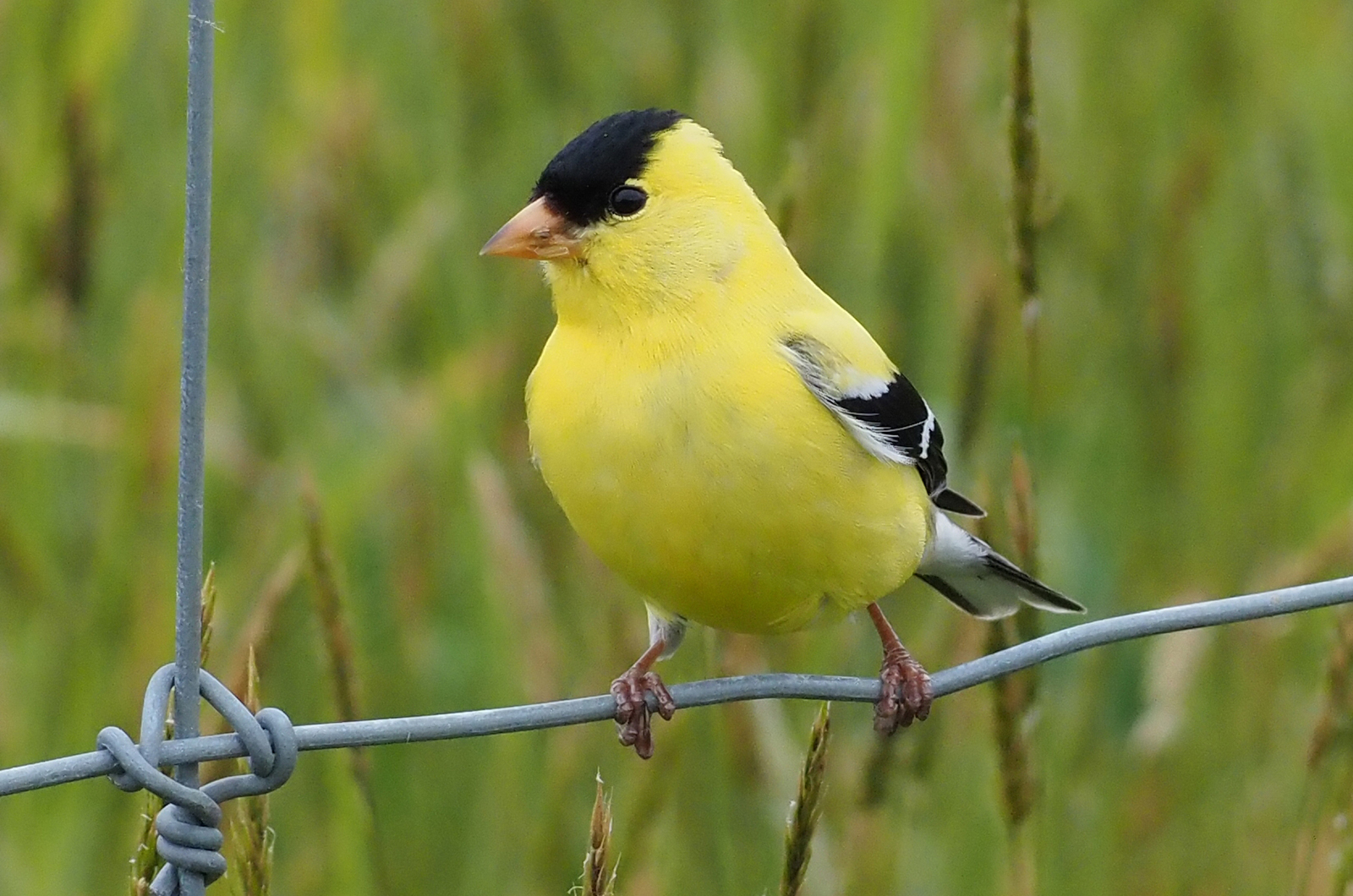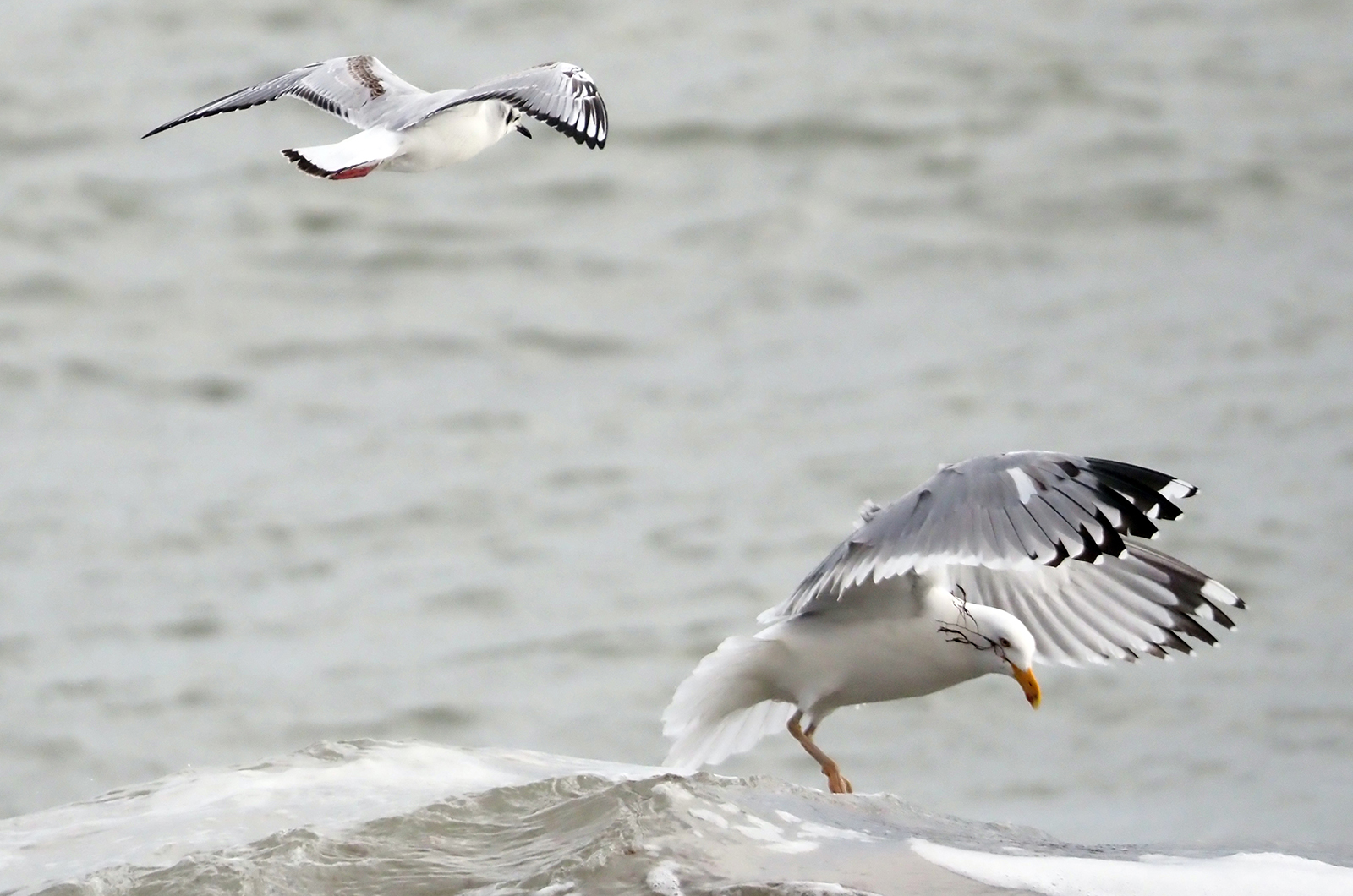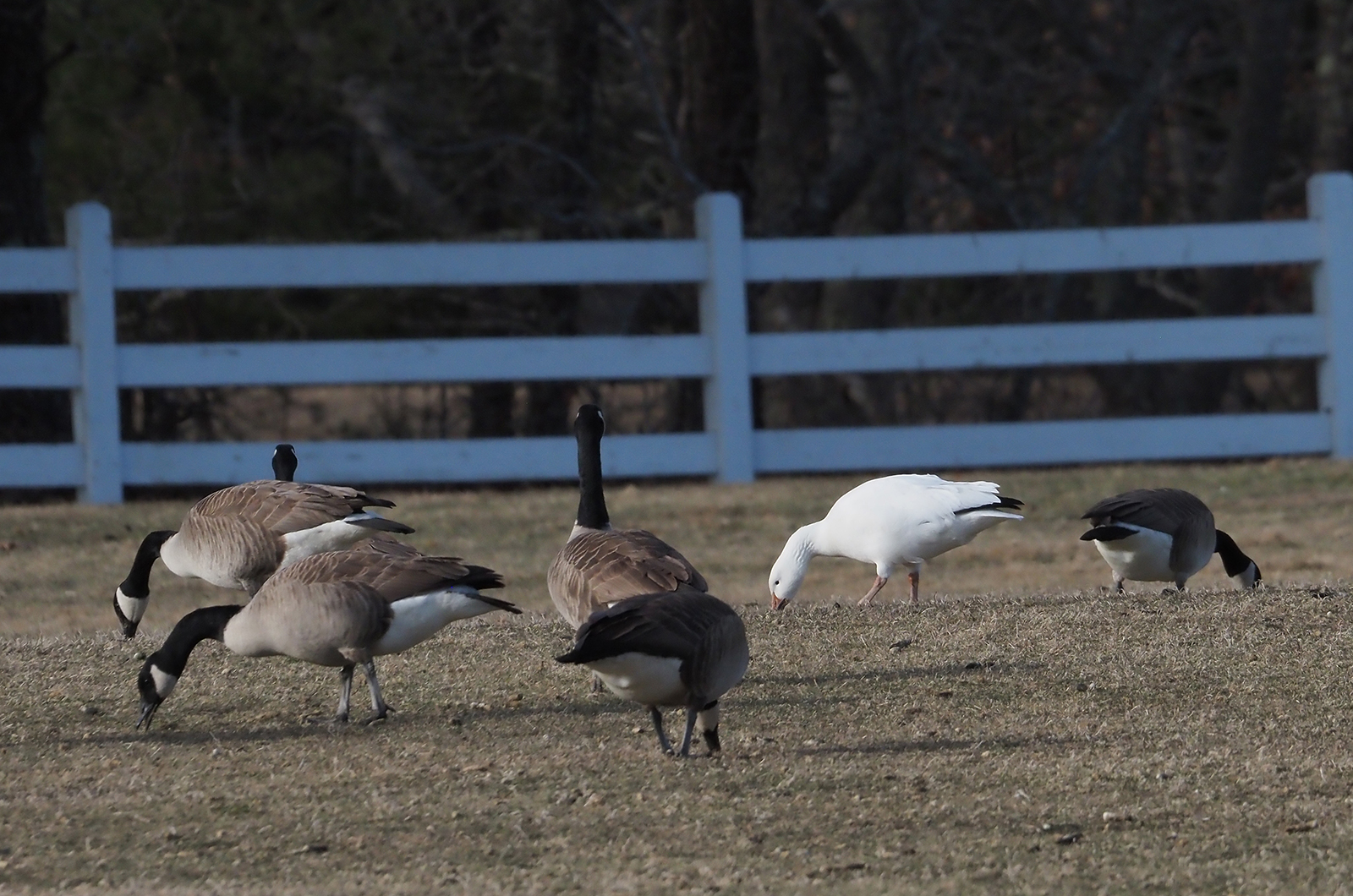One never knows where ideas for the next week’s Bird News column will come from.
Last week Lanny McDowell wrote about leucistic birds while I was visiting Ithaca, N.Y. In the online column David Stanwood commented, “I can report an odd sighting. Many years ago I saw a blue jay with absence of feathers from the neck up. Very healthy dark skin color. Kind of a scary sight!”
According to Project FeederWatch, from the Cornell Laboratory of Ornithology, blue jays can have a bald stage where they molt all their head feathers nearly simultaneously. Their bald condition is short-lived, however, lasting a little more than a week while they grow in new head feathers.
Northern cardinals can have similarly bald heads and there have been a few such birds here in recent years. The website Birds of the World, from the Cornell Laboratory of Ornithology, cites a study in Tennessee that documents that fewer than five out of a thousand cardinals showed this odd plumage, which lasts until the birds’ next molt.
It is not news that ospreys are an iconic sign of spring on the Island. They typically arrive back home at this time of the year, just as spring is arriving. Despite the somewhat intensive searching by Matt Pelikan, Nancy Nordin, Lanny McDowell and myself, there were only two ospreys reported this week. On March 16 Tony Lima heard one near the head of Mashacket Cove, near Kanomika Road in Edgartown, but he could not find the bird. On March 18 Roger Cook spotted one at Squibnocket Pond.
The Island’s approximately 110 breeding pairs of ospreys will arrive soon, and their iconic call will again be heard across the Island.
Another much less-heralded arrival is the double-crested cormorant. While they are now found here year-round — they are increasingly common through the winter — they are not found at their breeding colony on Sarson’s Island in the winter. Chris Scott observed a solitary individual there on March 14 and on March 18 he spotted four there.
Of the three falcons — peregrine falcon, merlin and American kestrel — only the latter is a migrant rather than a winter resident. Kestrels typically arrive in late March but one got here a bit early: Parker Fyfe-Kiernan spotted it on March 13 near Squibnocket Beach.
The fourth arrival of this week is the piping plover. They are maybe a week earlier than usual. Two were seen at the entrance to Lake Tashmoo on March 19, first by Nancy Nordin and then later in the afternoon by Amy and Olsen Houghton. We will be sharing our beaches with these plovers during their soon to start nesting season.
Ira Certner reports finding a lone pine warbler at a feeder near the State Forest in Edgartown on March 13. Also at the feeder were numerous house finches, Carolina wrens and at least one American goldfinch. Gus Ben David had his first pine warbler show up at his Edgartown feeders on March 19 and he comments that pine warblers and goldfinches have been unusually scarce this winter.
Gus also reports that he finally has a pair of barn owls after an eight-year absence. A cold and snowy winter eight years ago killed most of the barn owls on the Island. Bob Woodruff reports that “his” pair of barn owls are very active and may have youngsters in the nest.
It has been an unusual winter for Bonaparte’s, lesser black-backed and Iceland gulls; multiple individuals have been seen regularly through the winter. Up to six Bonaparte’s gulls have been seen at Squibnocket Beach: one by the MV Birding Club on March 12, six by Parker Fyfe-Kiernan on March 13, three by Lanny McDowell on March 14, and three by Bob Shriber on March 16. Chris Scott found two of these small gulls at the Big Bridge on State Beach on March 18, and in recently weeks they have been spotted at Crystal Lake, Menemsha Harbor and off the Gay Head Cliffs. Both lesser black-backed and two Iceland gulls have been spotted recently by Matt Pelikan and by me at Ocean Park and the nearby Inkwell Beach in Oak Bluffs.
Ring-billed gulls are also distributed around the Island. Three were spotted at the Gay Head Cliffs on March 12 by Lisa Maxfield. Also that day one was observed at Squibnocket Beach by Nancy Nordin. The next day one was observed there by Parker Fyfe-Kiernan and on March 16 Bob Shriber watched two at that location. At the Big Bridge Chris Scott spotted six on March 15, the same number he counted again on March 19. During strong winds at Ocean Park, Parker Fyfe-Kiernan found a flock of 25 on March 14, and 20 were present on March 16. He also spotted two at Crystal Lake on March 16. On March 18 Lisa Maxfield observed two at the drawbridge while Parker Fyfe-Kiernan saw 10 at Menemsha Pond.
The snow goose that has been at Katama Farm is still hanging around. Jeff Bernier spotted it on March 14 with some Canada geese, and he also saw the flock of horned larks that has been hanging out there. Allen Slater reports that a snow goose was seen in a field on Chappaquiddick on March 12. Both of these sightings may be of the same bird.
Tim Johnson found a long-tailed duck in Oak Bluffs harbor on March 13. Jeff Bernier saw three in Edgartown Harbor; they seemed tame and allowed him to get very close. A male Barrow’s goldneye turned up in Menemsha harbor and was spotted by Nancy Nordin on March 12. It was seen by Jeff Peters on March 14.
And finally: on March 13 John Nelson observed an immature bald eagle at Quitsa Pond, and at Cow Bay he observed one great egret.
Please email your sightings to birds@vineyardgazette.com.
Robert Culbert is an ecological consultant with Nature Watch LLC living in Vineyard Haven.









Comments (3)
Comments
Comment policy »